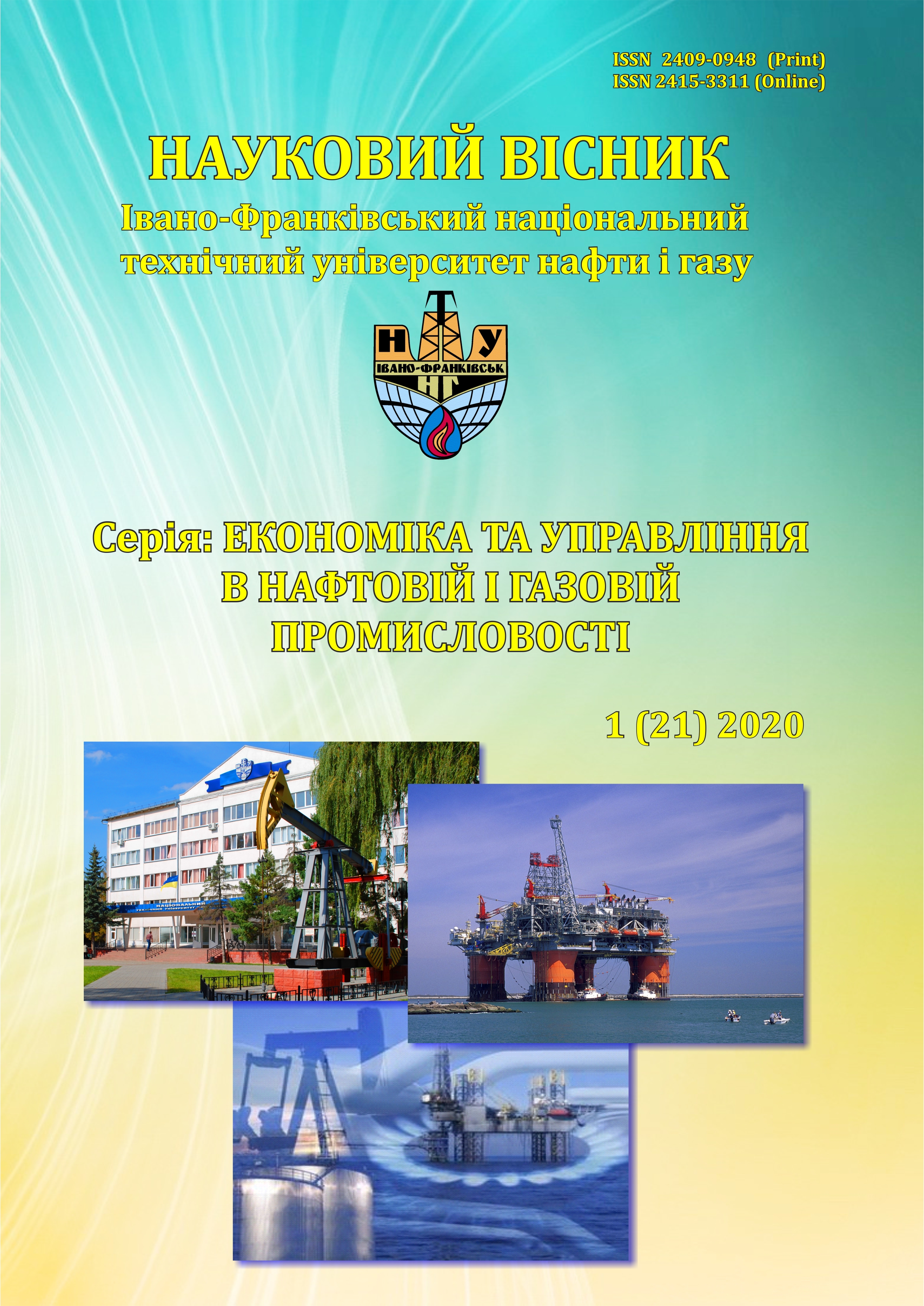RESOURCE ORIENTATION IN MANAGING CHANGES IN HEALTHCARE ORGANIZATIONS – RESEARCH RESULTS
DOI:
https://doi.org/10.31471/2409-0948-2020-1(21)-115-122Keywords:
Resource-Based View (RBV), health care organization, change managementAbstract
Abstract.The author considered the prospects for applying a resource-based approach in the practice of managing change in healthcare organizations. Referring to the problem formulated in this way, the author identified basic problems in healthcare organizations. The author conducted a qualitative research on the application of the resource approach in the process of change management in healthcare organizations. One of the latest and popular view among managers and scientists that the effectiveness of an organization depends on the possession and proper use of its resources and capabilities.
The article indicates the effective application of a resource-based approach in managing change in healthcare organizations. The first part presents the theoretical considerations underlying empirical research. The second part of the work presents the results of own research and an attempt to answer the research questions posed:
- is the resource-based approach dominant in the decision-making process in the process of managing change in healthcare organizations?
- Is the level of using the resource approach in the process of change management in managing change in healthcare organizations growing along with the increase in the dynamics of changes in the environment of these organizations?
The study found that in healthcare organizations, a resource-based approach dominates decision-making. A resource-based approach allows organizations to effectively manage and make changes. In addition, it is a set of activities directed at all the resources of a medical organization. The role of resources in achieving the goal of change has therefore become a premise for the emergence and development of strategies to achieve effective change.
References
development of competitively valuable organizational capabilities. “Strategic Management Journal”, No. 79(8), p. 729-753.
K. Szymaniec (2012). Wykorzystanie podejścia zasobowego (RBV) do kształtowania relacji z interesariuszami i zarządzania organizacją publiczną, A. Frączkiewicz-Wronka: Wykorzystanie analizy interesariuszy w zarządzaniu organizacją zdrowotną. Śląsk, Katowice p. 68-69. [in Poland]
J.B. Barney, D.N. Clark (2017). Resource-Based Theory. Creating and Sustaining Competitive Advantage. Oxford University Press, New York, pp. 4-14.
J. Barney (2015). Firm Resources and Sustained Competitive Advantage. “Journal of Management”, Vol. 17, pp. 99-120.
R. Grant: Strategic planning in a turbulent environment: Evidence from the oil majors. “Strategic Management Journal”, Vol. 24, 2013, pp. 491-517.
R. Krupski. Orientacja zasobowa w badaniach empirycznych. Identyfikacja horyzontu planowania rynkowych i zasobowych wielkości planistycznych. Wałbrzyska Wyższa Szkoła Zarządzania i Przedsiębiorczości, Wałbrzych 2015. [in Poland]
G. Boyne, K. Meier (2019) Environmental turbulence, organizational stability, and public service performance. “Administration & Society”, Vol. 40, No. 8, pp. 799-824.[in USA]
R. Burton, B. Obel, G. DeSanctis (2016). Organizational Design. A step-by-step approach. Cambridge University Press., New York, p. 46
A. Frączkiewicz-Wronka, K. Szymaniec (2015). Model interesariuszy w zarządzaniu zmianą w szpitalach, Ł. Sułkowski, R. Seliga (red.): Kulturowe determinanty zarządzania szpitalami w Polsce. Difin, Warszawa , s. 215-247. [in Poland]
P.G. Klein, A. McGahan, J.T. Mahoney, Ch.N. Pitelis (2016). Resources, Capabilities, and Routines in Public Organization. Working Papers, University of Illinois, College of Business, 2015, www.business.illinois.edu/Working_Papers. p. 8. Dostęp: styczeń . [in Poland]
J. Matthews, A. Shulman (2017). Competitive advantage in Public sector organizations: Explaining the public good/sustainable competitive advantage paradox. “Journal of Business Research”, Vol. 58(2), pp. 232-240.
V. Eiriza, N. Barbosa, J. Figueiredo (2015). A Conceptual Framework To Analyse Hospital Competitiveness. “The Service Industries Journal”, Vol. 30 No. 3, pp. 437-448.
M. Romanowska (2015). Metody badania strategii, R. Krupski (red.): Metody badań problemów zarządzania strategicznego. Prace Naukowe Wałbrzyskiej Wyższej Szkoły Zarządzania i Przedsiębiorczości, tom 17, Wałbrzych , s. 73. [in Poland]
R. Krupski (2016). Orientacja zasobowa w badaniach empirycznych. Identyfikacja horyzontu planowania rynkowych i zasobowych wielkości planistycznych. Wałbrzyska Wyższa Szkoła Zarządzania i Przedsiębiorczości, Wałbrzych , s. 50-51. [in Poland]
The Act on Medical Activity, effective from 1 July 2011, introduced the definition of a medical entity. Independent public healthcare institutions under the Act are non-entrepreneur healthcare entities (Article 2 (1) (4) and Article 4 (1) (2 and 3).
R. Meyer (2017). Synteza strategii. Tworzenie przewagi konkurencyjnej przez analizowanie paradoksów. Polskie Wydawnictwo Ekonomiczne, Warszawa, s. 147-185. [in Poland]
Downloads
Published
How to Cite
Issue
Section
License
Copyright and Licensing Terms
Copyright Statement
The authors who publish in the journal accept the following conditions:
- The authors retain the copyright and grant the journal the right of first publication, licensed with Creative CommonsCC BY-NC-SA , which permits other people to remix, transform, and build upon the material and use the material for non-commercial purposes, give appropriate credit and distribute the contributions under the same license as the original.
- The authors can conclude additional agreements on the non-exclusive distribution of the journal’s published version of the work (for example, publication of the work in electronic repositories) with an acknowledgment of its initial publication in this journal.
- The authors can upload the published articles on the Internet (for example, in electronic repositories or on web-sites), as it will stimulate fruitful scholarly discussions and increase the citation rates of the published articles.


1.png)


1.png)





